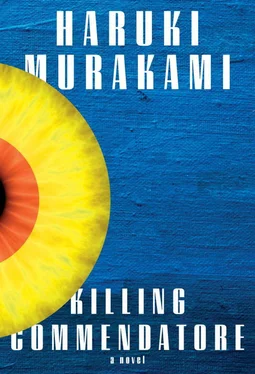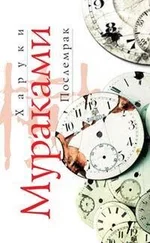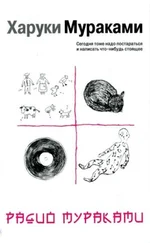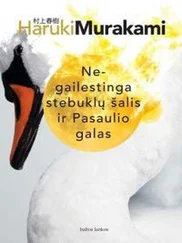I showed him into the studio, and had him sit on the same dining room chair as before. I put Richard Strauss’s Der Rosenkavalier on the turntable and lowered the needle. I started at the point we’d ended up with last time. Everything was a repeat of the previous sitting. The only difference was that this time I didn’t offer him a drink, and instead had him pose for me. I had him seated on the chair, facing forward, looking to the left, his eyes slightly facing toward me. That’s what I wanted from him this time.
He followed my instructions exactly, but it still took a while until he got the position and pose right. The angle and look in his eyes wasn’t exactly the way I wanted them. The way the light struck, too, wasn’t like my mental image. I don’t usually use a model, but once I do, I tend to have a lot of demands. Menshiki very patiently followed my nagging directions. He never looked put out, never complained. I pegged him as a person experienced in putting up with all sorts of trials and difficulties.
When he finally got the pose right I said, “I’m very sorry, but try to hold that pose without moving.”
Menshiki said nothing, only his eyes indicating that he understood.
“I’ll try to finish as quickly as I can. It might be hard, but please be patient.”
Once again he nodded with his eyes. He kept his gaze still, his body unmoving, literally not moving a muscle. He did have to blink a few times, but I couldn’t even tell if he was breathing. He was so still he looked like a lifelike statue. I couldn’t help but be impressed. Even professional art models find it hard to get to that point.
As Menshiki endured posing, I worked on the canvas as quickly and efficiently as I could. I concentrated, eyeing his figure, and moved my brush as my intuition dictated. I was using black paint on the white canvas, and with a single fine brushstroke fleshed out the outline of his face I’d already drawn. No time even to re-grip the brush. In a limited amount of time I had to capture the various elements that made up his face and get them down on canvas. At a certain point the process switched over to something close to autopilot. It’s important to bypass your conscious mind and get your eye and hand movements in sync. There’s no time to consciously process every single thing your gaze takes in.
This demanded a very different type of process from me compared with the numerous portraits I’d done up till then—the countless “business items” I’d leisurely painted based solely on memory and photographs. In about fifteen minutes I’d gotten him from the chest up on canvas. It was just a rough, incomplete outline, but at least I was able to capture an image that seemed to breathe a sense of vitality, one that managed to scoop out and capture the sort of internal movement that gave birth to who this person was. If this were an anatomical drawing, though, it would be just the bones and muscles, the internal part alone boldly laid bare. It needed actual flesh and skin laid on over it.
“Thank you, you’ve been very patient,” I said. “That’s enough for today. You can take it easy now.”
Menshiki smiled and relaxed his pose. He stretched his hands above him and took a deep breath. He slowly massaged his face with his fingers to loosen up the tense muscles. I stood there taking a few deep breaths. It took a while for my breathing to return to normal. I was exhausted, like a sprinter who’d just finished a race. I’d had to work speedily, with intense concentration, and with no room for compromise, something I hadn’t experienced for quite some time. I’d had to flex long-dormant muscles, and though I felt tired, it also felt good.
“Like you said, sitting for a painting is a lot harder work than I’d imagined,” Menshiki said. “When I think about you painting me, it feels like my insides are slowly being scraped away.”
“The official view in the art world is that it’s not being scraped away but rather transplanted to a different place,” I said.
“Transplanted to a more permanent, lasting place?”
“Yes, if the painting is a true work of art.”
“Like, for instance, the nameless mailman who lives on in Van Gogh’s portrait of him?”
“Exactly.”
“He probably had no idea that, well over a century later, countless people around the world would visit art museums, or look through art books, and gaze intently at his portrait.”
“I’m sure he never had a clue.”
“It was some odd painting done in a corner of a shabby country kitchen, painted by a man who, whichever way you look at it, was a little off.”
I nodded.
“It’s kind of weird,” Menshiki said. “Something that, on the face of it, shouldn’t be so lasting ends up having permanent value.”
“Not something that happens every day.”
I suddenly thought of Killing Commendatore . Through Tomohiko Amada’s hand, was the Commendatore given permanent life, even though he was stabbed to death in the painting? And who was this Commendatore anyway?
—
I offered Menshiki some coffee. That would be nice, he replied, and I went to the kitchen and made a fresh pot. Menshiki remained on the chair in the studio, listening to the opera record. The coffee was ready as the B side of the record came to an end, and we went into the living room to drink it.
“So, does it look like you can do a good portrait of me?” Menshiki asked as he delicately sipped his coffee.
“I’m not sure yet,” I answered honestly. “I don’t know if it will turn out well. The way I’ve painted portraits up till now has been so different from this.”
“Because you’re using an actual model this time?” Menshiki asked.
“That’s one reason, but only a part of it. I don’t know why, but it’s like I’m not able anymore to paint the sort of conventional portraits I’ve done up till now. I need a different method and procedure, but those are still out of reach. I’m still fumbling in the dark.”
“Which means you really are changing. And I’m the catalyst for that change—wouldn’t you say?”
“You may be right.”
Menshiki thought for a while before speaking. “As I told you before, it’s entirely up to you what style of painting you do. I’m a person who’s always seeking change, always in flux. And it’s not like I’m hoping you’ll paint some conventional portrait. Any style, any concept is fine. What I want is for you to depict me exactly as you see me. The methods and procedure are up to you. I’m not hoping I live on like that mailman from Arles. I’m not that ambitious. I just have a healthy curiosity to see what sort of painting will emerge from this.”
“I appreciate your saying that. I just have one request,” I said. “If I can’t come up with a satisfactory painting, then I’d like to forget the whole thing.”
“You won’t give me the painting then?”
I nodded. “I’ll return the advance, of course.”
“All right,” Menshiki said. “I’ll let you be the final judge. Though I must say I have a strong hunch it’s not going to turn out that way.”
“I hope your hunch turns out to be correct.”
Menshiki looked me in the eyes. “But even if the painting’s never completed, I’d be very happy if, in some way, I’m able to help you change. Truly.”
—
“By the way, Mr. Menshiki,” I said, broaching the topic a little while later, “there’s something I wanted to get your advice on. Something personal, nothing to do with the painting.”
“Of course. I’ll be happy to help if I can.”
I sighed. “It’s kind of a weird story. I might not be able to tell the whole story in the right order, so it makes sense.”
Читать дальше











